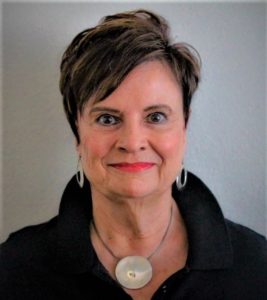Case Study: Drone Regulation March/April 2018 Facts & Findings
Drones can be both fun and troublesome. Photographers enjoy the fantastic shots they capture with a drone flying in high places he or she cannot physically reach. Others just experience the thrill of navigating a drone through an empty field. Some, unfortunately, have gone beyond ethical borders to trespass onto restricted property or to invade the privacy of another in their own home.
Drones can serve as a useful surveillance device in areas of grave danger for our service men and women as well as assist law enforcement in gathering evidence. Drones may eventually serve as an efficient and cost-saving transportation device for deliveries, as proposed by Amazon’s Prime Air. To keep society informed, drones are used by the National Weather Service to monitor storms and to assess tornado damage.
Are current regulations addressing the safe use of such unmanned aircraft while safeguarding Fourth Amendment privacy rights? The Federal Aviation Administration (FAA) has specific training requirements for drone operators. But according to author Waynee Hicks, there are currently no federal regulations on the use of drones precise to law enforcement agencies. 47 U. Balt. L.F. 130 (Spring, 2017). The agencies are required, however, to complete an application process agreeing to operate drones within federal guidelines. Id. Of course, any evidence illegally gathered when using a drone cannot be used in court. The FAA has granted state and local governments the authority to determine the ground locations from which drones may be operated. Local regulations seem to focus on citizen privacy. There appears to be a lack of uniformity between state drone guidelines and those of the FAA.
INTRODUCTION AND FACTS
Singer v. City of Newton, 2017 WL 4176477 (U.S. District Court, Massachusetts, 9/21/2017) is the case of a resident challenging a Massachusetts city ordinance that requires drone registration and prohibits its flight space. Michael S. Singer is also an FAA certified small unmanned aircraft pilot. The question is whether unmanned aircraft, i.e., drones, fall under federal regulation or local permission rules. Singer argues the flying of unmanned aircraft is “an almost exclusively federal area of law” and that any city ordinance is preempted. Newton argues that unmanned aircraft fall under FAA law granting local government the “power to coregulate.”
The Newton City Council in 2015 found it necessary to address drones and their increasingly widespread use in the context of protecting citizen privacy. Newton Ordinance Section 20-64 was passed in 2016, outlining the following criteria: (1) All owners of drones must register their aircraft with the city. (2) The use of drones below 400 feet over private property without express permission of the property owner is prohibited. (3) Drones must not travel “beyond the visual line of sight of the operator.” (4) The operation of drones is prohibited “over city property at any altitude without prior permission.”
COMPARING THE LAW
“The United States government has exclusive sovereignty of airspace.” 49 U.S.C. § 40103(a)(1). There is case law, however, that acknowledges this section of the U.S. Code does not prevent local governments from passing aviation regulations. With the increased popularity of drones, the FAA Modernization and Reform Act of 2012 was passed to provide drone regulations and guidelines for drone integration into national airspace. This Act is a comprehensive plan outlining registration, airman certification, and operation of small unmanned aircraft. Similar to the criteria outlined in the Newton Ordinance, anyone operating a small unmanned aircraft must register with the FAA and keep the aircraft within sight of the operator or a designated observer.
DECISION
In reviewing the Newton Ordinance, the FAA found that “no local government may impose an additional registration requirement.” Newton did not obtain approval from the FAA before implementing its Ordinance. Secondly, the Ordinance sought to register all drones in public spaces without regard to altitude, which “works to eliminate any drone use absent prior permission. This restriction thwarts the FAA’s objectives, and those of Congress, to integrate drones into the national airspace.” Finally, the FAA allows the requirement for a visual observer to be waived. This waiver also is in direct contradiction to the Newton Ordinance. Ultimately, the above-outlined criteria found in the Newton Ordinance were preempted. The city was encouraged to consider redrafting regulations for local drone use.
LOOKING AHEAD
In summary, the relatively new technology of drones provides many potential benefits but has brought about unintended legal ramifications that must be addressed. The threat to privacy should be paramount. Legislators must continue to work at both the state and federal levels to implement consistent drone regulation. Forbes reported in February 2017 that a passenger carrying drone was transporting individuals over the Dubai skyline without a pilot. to the manufacturer, Ehang, “in the event of a malfunction, the drone will immediately land in the nearest available area.” Such a landing would violate U.S. regulation. Business Insider magazine reported in early November 2017 that China has the potential to dominate the global market with their drone technology. www.businessinsider.com/chinesedrones-swarm-market-2017-11. Not only does this pose an economic threat to the U.S. drone market, but how will such competition and in-flight activity be regulated?
About the Author:

Jackie Van Dyke, CP, is a virtual paralegal and graduate-level instructor in The George Washington University (GWU) Paralegal Studies program. She is a legal writing coach and paralegal mentor. Jackie earned a Paralegal Certificate in General Litigation from the University of San Diego, and her Master’s degree in Paralegal Studies from GWU. Jackie is a member of the National Association of Legal Assistants, and the Organization of Legal Professionals.
email: vandykeparalegalwriter@gmail.com


 Categories
Categories